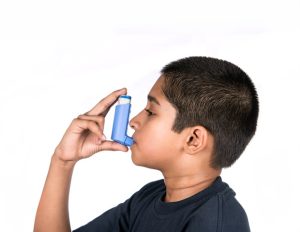Research shows that receiving warmth from a caregiver during childhood protects cardiovascular health later in life

In a recent study published in Circulation: Cardiovascular Quality and Outcomes, a group of researchers examined the association between childhood Risky Family (RF) environment and cardiovascular health (CVH).
Background
Cardiovascular disease (CVD) is the leading cause of death in the United States, with early signs emerging in childhood. The American Heart Association (AHA) has set goals to reduce CVD by defining CVH metrics focusing on lifestyle and clinical factors. However, achieving ideal CVH is challenging, especially among Black and Latino populations.
Early Life Stress (ELS), including adverse childhood experiences (ACEs), impacts CVH, suggesting the need for primordial prevention starting in childhood. Further research is needed to understand the complex interplay between adverse and nurturing childhood experiences and their long-term impact on CVH.
About the study
The Coronary Artery Risk Development in Young Adults (CARDIA) study analyzed 2074 participants, focusing on their responses to the RF Environment Questionnaire, collected at the 15-year follow-up. The questionnaire, assessing adverse childhood experiences, including emotional and physical abuse and family dynamics, helped compute the RF score, indicating the degree of adverse childhood environment.
Researchers further dissected this data, focusing on child abuse and caregiver warmth aspects to evaluate early childhood relational health. The child abuse subscale measured physical and emotional maltreatment, while the caregiver warmth subscale evaluated the level of affection and support from family adults.
The primary outcome of the study was CVH, gauged using the AHA’s 2020 guidelines. This assessment involved a range of health metrics like tobacco use, body metrics, lipid levels, physical activity, diet, blood pressure, and glucose levels. Participants’ health was classified as poor, intermediate, or ideal CVH based on a cumulative score from these metrics.
Statistical analysis comprised descriptive evaluations of the cohort and a comparison between groups with low and high RF scores. The primary objective was to explore the impact of the RF environment on CVH over time. The study also investigated the combined effect of child abuse and caregiver warmth on CVH.
Secondary analyses looked at how adult income might modify the relationship between childhood environment and CVH. Sensitivity analyses were performed to account for different CVH scoring methods used in previous studies, ensuring a comprehensive assessment of the RF-CVH relationship.
Study results
In the CARDIA study, comprising 2074 participants, the average age at baseline was 25.25 years, with 55% being female and 61% White. Initially, 55% of the cohort met at least 5 of the ideal CVH categories, predominantly in fasting glucose, yet only a minority met the ideal dietary metrics. By the 7th year, the proportion meeting ≥5 ideal CVH categories decreased to 45%, and further declined to 24% by the 20th year. Remarkably, less than 1% of participants consistently met all 7 ideal CVH categories throughout the study.
The median score for the RF Environment was 10, with an interquartile range of 8–14. Participants with a median or lower RF score were similar in demographic characteristics to those with higher scores but differed in adult income and education. Those with higher RF scores were more likely to earn less than $25,000 annually and have fewer years of education. Furthermore, a smaller proportion of individuals in the high RF group met ≥5 ideal CVH categories at each follow-up point compared to their low RF counterparts.
At baseline, participants with high RF scores were more likely to be obese or smokers, but no other CVH category differences were noted. Overall, those with high RF had consistently lower CVH scores over the years compared to those with low RF.
Longitudinally, a higher RF score was significantly linked to a lower CVH score over the 20-year period, with each unit increase in RF score reducing the odds of achieving ideal CVH by 3.5%. This association was stable over time, not influenced by the year of examination.
In terms of relational health, greater child abuse scores were associated with lower odds of achieving ideal CVH, whereas higher caregiver warmth scores increased these odds. A significant interaction was observed between child abuse and caregiver warmth, indicating that high caregiver warmth combined with low child abuse exposure led to the highest CVH scores.
Income-stratified analyses revealed that the impact of RF on CVH varied across income levels. Higher RF was consistently associated with lower CVH in the $35k to $74k and ≥$75k income brackets but not in lower income groups. There was a significant interaction between caregiver warmth and income, suggesting that caregiver warmth’s impact on CVH varies with income levels.
Sensitivity analyses confirmed the consistency of these results across different CVH scoring cutoffs and across all years of follow-up. These findings underscore the long-term impact of childhood environment and relational health on CVH into adulthood.








